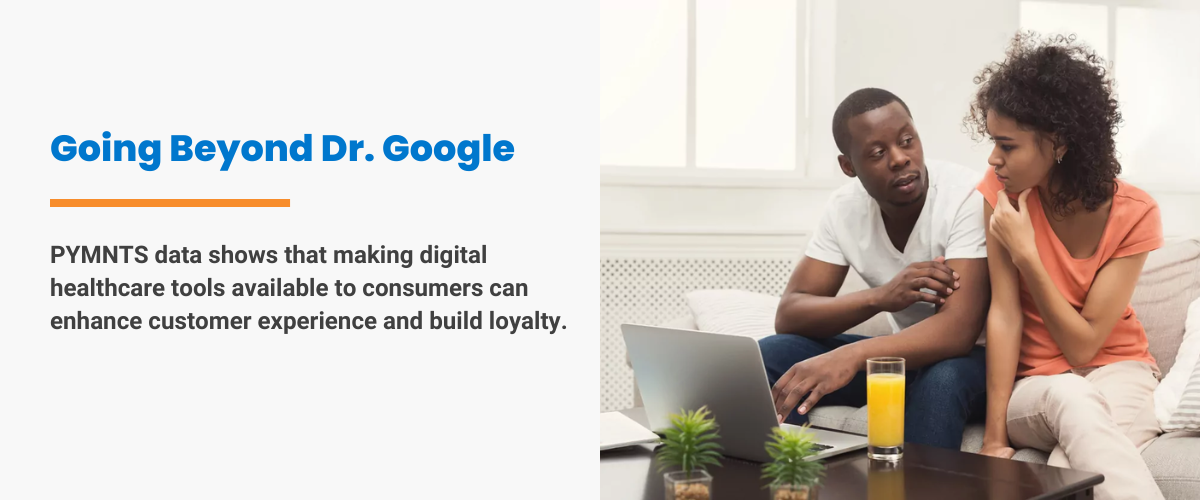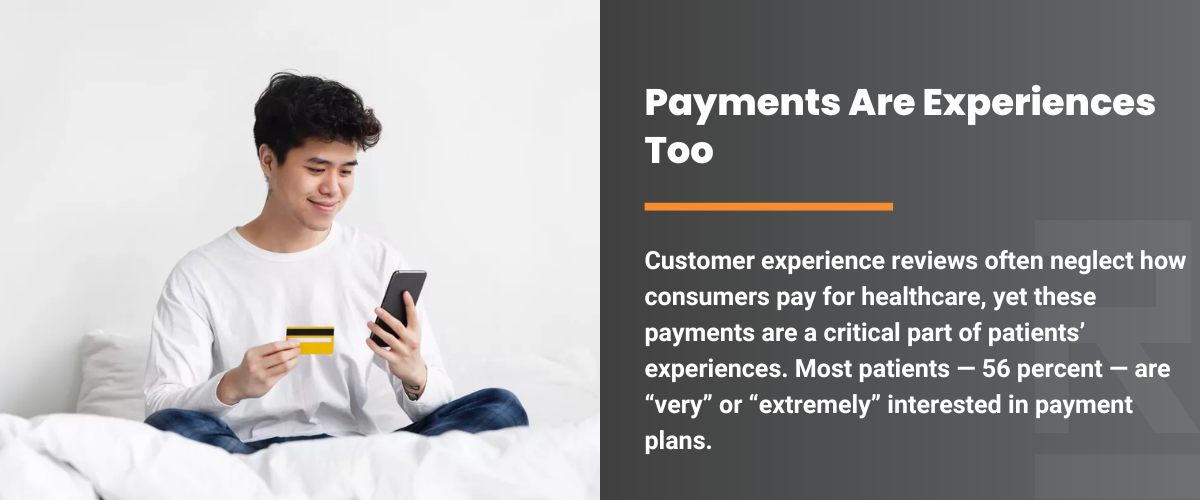Amplifying Millennial Patient Loyalty
HealthTech, which encompasses everything from popular telehealth options to self-service healthcare kiosks, is generating buzz on Wall Street and in the media, fueling heavy investor commitments to HealthTech innovations in 2021. 1,2 PYMNTS’ research shows that the promotion of HealthTech that improves patient experience — ranging from digital check-ins to payments to automated appointment reminders — presents new opportunities for healthcare marketers to engage patients and sustain their loyalty over time.3 Millennials, America’s largest age group, are digital natives, and PYMNTS’ research reveals that they are focused on convenience and simplicity when it comes to interactions with their healthcare providers. HealthTech innovations such as digital records management, automated payment plans, and hybrid telehealth options are more than just trendy customer experience add-ons for patients. 4,5 They represent a fundamental shift in the way patients interact with their healthcare providers, as well as a new standard of customer service that puts consumer preference first.6
Healthcare providers seeking to engage new consumers and build customer loyalty must be aware of the impact the digital shift has had on consumer healthcare preferences for how they select, receive, and pay for care — especially for millennials.7,8 Millennial consumers are accustomed to online experiences that prioritize frictionless interactions, and HealthTech tools are just one more way they can digitally manage the most important areas of their lives. Despite high levels of healthcare provider loyalty among most consumers, bridge millennials, millennials, and Generation Z patients lead every other demographic in their willingness to switch providers to those that offer the digital healthcare tools they desire. Younger consumers’ affinity for providers that make healthcare services easier to access through digital tools appears to be growing stronger. PYMNTS’ research found that the likelihood that Gen Z, millennial, and bridge millennial patients would switch to providers that offer digital healthcare management tools rose from 31 percent in November 2020 to 35 percent in April 2021. In Generation HealthTech: How Digital Tools Amplify Millennial Patient Loyalty, a collaboration with Rectangle Health, PYMNTS describes how healthcare providers can leverage millennial and younger consumers’ interest in digitally managed customer experiences to boost patient loyalty.

Going Beyond Dr. Google
Why Digital-Native Patients Care about Tech Tools
The trope “Dr. Google” to describe consumers’ propensity to research medical conditions online is more than a dismissive aside. Today’s digital-native healthcare consumers not only look up their symptoms, potential providers, and co-pay rates before booking appointments but also want digital control over their healthcare experiences.9,10 PYMNTS data shows that making digital healthcare tools available to consumers can enhance customer experience and build loyalty, but why does it matter so much?11 Research shows that most consumer interest in digital healthcare management tools is practical: Consumers want digital options that save them time in communicating with healthcare providers and allow them greater interactivity on their own terms. Consumers also want access to tools that help them limit friction when paying for healthcare, such as upcoming payment reminders and payment plans. PYMNTS’ research has found that most patients, 76% are “very” or “extremely” interested in using at least one digital method to manage their healthcare services or interactions with their providers. This is especially true of bridge millennial and younger patients, whose interest in such features rises to 86 percent. Contrary to stereotypes about millennials and healthcare avoidance, research shows that 93 percent of millennials desire a patient relationship with a primary healthcare provider (PCP). In addition, the quality of their relationship with their PCP matters to millennials: 90 percent desire a holistic, ongoing relationship with their provider that includes frequent communication about their emotional and mental health, personal relationships, and overall lifestyle wellness.12 Another recent survey revealed the level of frustration millennials carry with respect to their healthcare providers’ communication practices: 76 percent of millennials said they wished their providers would reach out to them more often between appointments.13 That means healthcare provider accessibility and user-friendly healthcare communications likely are essential components of a positive patient-provider relationship for most millennial consumers.
Recent PYMNTS research underscores the importance of digital healthcare management to millennials. Bridge millennials and younger patients showed increased interest in both reviewing their medical histories digitally (rising from 64 percent of patients who were “very” or “extremely” interested in November 2020 to 68 percent in April 2021) and filling out medical forms digitally (up from 58 percent to 60 percent). They also expressed greater interest in securely communicating with healthcare providers (increasing from 63 percent to 65 percent) and receiving digital payment notifications (up from 59 percent to 60 percent). Generation Z, millennial, and bridge millennial consumers also became more likely to switch healthcare providers if they were offered digital tools to manage healthcare services, with that share increasing from 31 percent to 35 percent. Here are three questions to ask when evaluating a healthcare provider’s millennial patient engagement strategy:
1. Are millennial patients’ unique needs being addressed?
Millennials make up the highest percentage of new parents, and they also sleep fewer and work more hours than generations before them.14 These busy patients are likely to find time-saving digital appointment reminders, a website with telehealth options, and simple digital records access to be key engagement drivers.15
2. Is the healthcare provider’s web presence simple, intuitive, and contextually relevant?
A vast majority of millennials (83 percent) conduct a great deal of research well before they book an appointment with a doctor — on subjects ranging from their potential doctors’ credentials to the possible meaning of their symptoms.16 A healthcare provider with a content-rich, user-friendly website can provide the answers millennials seek while engaging them online.
3. Are routine administrative tasks automated for consumers so that in-person visits are focused on care?
While PYMNTS’ research shows that 62 percent of millennials prefer in-person visits with their healthcare providers, they want those visits to be focused on care and not on administrative tasks.17 Digital tools can help healthcare providers keep millennial patients loyal with better in-office experiences.

Payments Are Experiences Too
Customer experience reviews often neglect how consumers pay for healthcare, yet these payments are a critical part of patients’ experiences. The past year placed a financial strain on many consumers, including millennials. A recent survey revealed that more than one-third of millennials (35 percent) were burdened with an unexpected medical bill in 2020, and more than half (51 percent) said it was over $2,000.18 According to the same study, most millennials have less than $3,000 earmarked to pay for medical expenses. A recent poll of millennial patients revealed that 48 percent have medical debt, with 54 percent of parents with young children reporting that they have ongoing bills they cannot pay all at once.19
While stimulus checks and tax refunds helped many millennials keep ahead of their medical bills, interest in payment plans remains strong among younger adults.20 Most patients — 56 percent — are “very” or “extremely” interested in payment plans. Bridge millennial and younger patients are also “very” or “extremely” interested in payment plans at a high rate (73 percent). PYMNTS’ research found that many healthcare consumers are not offered payment plans despite their interest in them. Clear onboarding processes for new patients can help limit confusion during payment and prevent missed payments. Healthcare providers seeking to boost millennial patient loyalty should keep in mind the following:
Competitiveness Requires Connectedness
Healthcare providers are encountering new categories of competition, from exclusively online telehealth services to personal health monitoring apps, that aim to reduce the need for in-person checkups. Healthcare providers seeking to retain millennial patients and build loyalty should provide these consumers with an arsenal of relevant digital healthcare tools.
Millennials Are Loyal but Aware of Their Options
Millennials value their time with their healthcare providers, and tools that limit friction in areas such as paperwork or billing surprises can preserve positive patient-provider relationships. Email and text notifications grew as key digital offerings that could encourage patients to switch providers. The importance of notifications about appointments more than doubled from 2020 to 2021, rising from 6 percent to 14 percent of consumers who said this is the most important digital offering that would encourage switching providers. This kind of digital feature is even more relevant for Gen Z consumers (23 percent in 2021). Notifications about insurance coverage (rising from 6 percent to 12 percent) and payments (rising from 3 percent to 7 percent) also became significantly more important this year.
In-Person Care Should be Data-Driven
Millennials want better in-person healthcare experiences as well as simplified digital communications because they are used to the efficiency of digital channels. Asking a series of relevant questions in the office about their desired digital healthcare options will ensure they are receiving the care they need in the way they prefer.
Make Communications Effortless
Patients are looking to interact with the healthcare provider’s office as easily as a retailer’s helpdesk or texting with a friend. Making digital communications frictionless is key to sustaining millennial engagement. PYMNTS researchers learned that younger patients are replacing phone contact with visiting the practice’s website. Research found that 13 percent of younger patients (Gen Z, millennials, and bridge millennials) said using a practice’s website was their most preferred method in 2021 — increasing from 9 percent in 2020. In line with this trend, the survey revealed that 31 percent in 2021 said calling on the phone was their most preferred method, down from 36 percent in 2020.
Look at Digital Engagement as More than a Website
Email and text notifications grew from 2020 to 2021 as a key digital offering that encourages patients to switch providers. This implies that millennial patients are not just gleaning information from healthcare provider websites but are using them as a way to connect to their providers. Ensure that your practice website includes an easy, secure way to make payments online as well as to send direct communication to the office.
Conclusion
While PYMNTS’ research shows that most millennial and younger patients prefer traditional in-person healthcare with a trusted provider, their desire for digital convenience and low-friction payment experiences often overrides their loyalty to a familiar physician. When given a choice between a familiar healthcare provider and one who offers the digital healthcare management options that millennials favor, many patients choose a digitally enhanced customer experience over-familiarity. Today’s consumers see their healthcare experiences — from how they manage appointments to how payments are arranged — as key to an overall positive patient visit. Healthcare providers seeking to remain competitive with consumers’ growing array of options, from telehealth to self-service health kiosks, must offer patients an in-office customer experience that meets their digitally inspired standards.
Methodology
Generation HealthTech: How Digital Tools Amplify Millennial Patient Loyalty is based on findings from a survey of 2,263 consumers representative of the U.S. adult population. The playbook reviews the impact of access to digital communication tools on patients’ loyalty to their healthcare providers and how healthcare services can leverage digital options to boost patient engagement.



